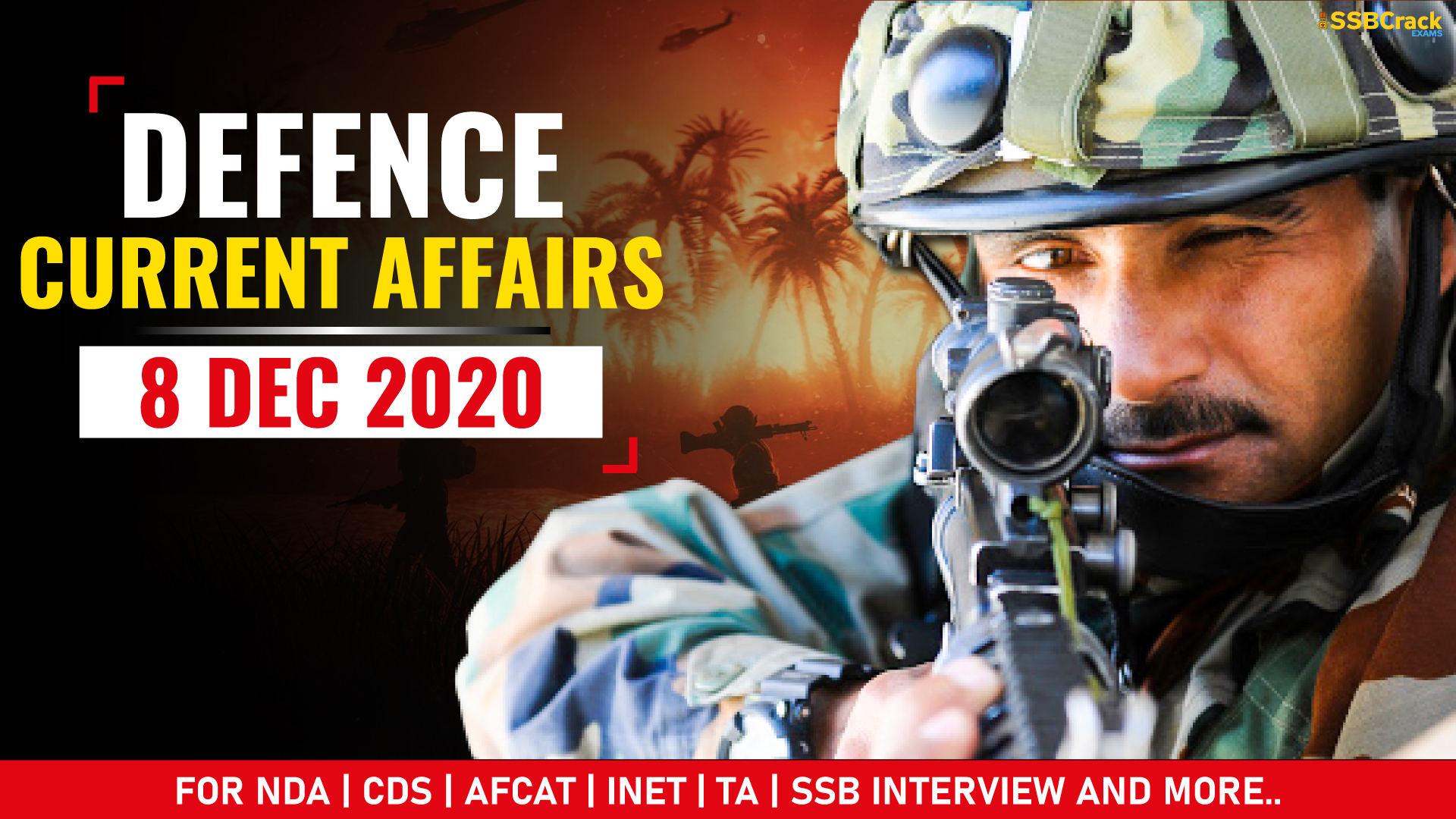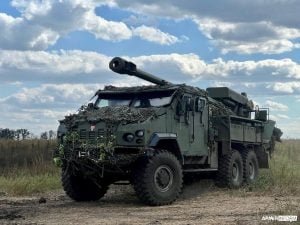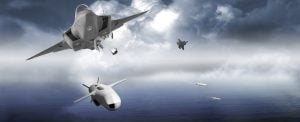08 December – Indian Navy Submarine Day
- Today commemorates the induction of the first submarine, the erstwhile INS Kalvari, into the Navy on this day in 1967. It was decommissioned on 31st May 1996.
- The elite arm of submarines is for those who yearn for the exclusive challenge of operating below the surface of oceans in highly technical & powerful submarines.
- Life on board submarines is a life amidst hi-tech war machines which have awesome firepower, state-of-the-art weapon control system, computer-controlled machinery and a high standard of habitability. Personnel for this elite arm are taken from various branches subject to their volunteering and clearing the aptitude test and medical standards. The major responsibility of the submarines in peace time is to train for war as effectively as possible, in the knowledge that this will contribute to its prevention. On successful completion of rigorous training, one becomes a proud possessor of the ‘Dolphin Badge” and a member of a very elite arm of the Navy.
- Submarines of the Indian Navy are highly sophisticated and technologically advanced platforms. On board submarines, men work with state-of-the art weapons, navigational systems, communication sets, diving equipment, etc. The art of submarine warfare involves having a good understanding of own capabilities and limitations and be able to turn them to own advantage. In order to fulfill the aim of using the submarine as an instrument of tactical warfare, personnel go through many years of rigorous practice in the art of operating weapon and sensors.
06 December – Raising Day of the Home Guards
- ‘Home Guards’ is a voluntary force, first raised in India in December 1946, to assist the police in controlling civil disturbance and communal riots. Subsequently, the concept of the voluntary citizen’s force was adopted by several States. In the wake of Chinese aggression in 1962, the Centre advised the States and Union Territories to merge their existing voluntary organisation into one uniform voluntary force known as Home Guards. The role of Home Guards is to serve as an auxiliary Force to the Police in maintenance of internal security situations, help the community in any kind of emergency such as an air-raid, fire, cyclone, earthquake, epidemic etc., help in maintenance of essential services, promote communal harmony and assist the administration in protecting weaker sections, participate in socio-economic and welfare activities and perform Civil Defence duties. Home Guards are of two types – rural and urban. In border States, Border Wing Home Guards (BWHG) Bns. have been raised, which serve as an auxiliary to the Border Security Force. The total strength of Home Guards in the country is 5,73,793 against which the raised strength is 433803.The organization is spread over in all States and Union Territories except in Kerala.
- Fifteen Border Wing Home Guards (BWHG) Battalions have been raised in the border States viz. Punjab (6 Bns.), Rajasthan ( 4 Bns.), Gujarat (2 Bns.) and one each Battalion for Meghalaya, Tripura and West Bengal to serve as an auxiliary to Border Security Force for preventing infiltration on the international border/coastal areas, guarding of VA/VPs and lines of communication in vulnerable area at the time of external aggression. Home Guards are raised under the Home Guards Act and Rules of the States/Union Territories. They are recruited from amongst all classes of people and walks of life, who give their spare time to the organisation for betterment of the community. Amenities and facilities given to Home Guards include free uniform, duty allowances and award for gallantry, distinguished and meritorious services. Members of Home Guards with three years’ service in the organisation are trained in policing, in maintenance of law and order, prevention of crime, anti-dacoity measures, border patrolling, prohibition, flood relief, fire-fighting, election duties and social welfare activities.
- The Ministry of Home Affairs formulates the policy in respect of role, raising, training, equipping, establishment and other important matters of Home Guards Organisation. Expenditure on Home Guards is generally shared between Centre and State Government in the ratio 25% by the Centre and 75% by the State Government for raising, training and equipping on reimbursement basis. For North-Eastern States except Assam, the sharing pattern between the Centre and States in the ratio of 50:50.For the current year 2017-18 out of the budgetary provision of Rs.25.00 crore, Rs. 11.38 crore has been reimbursed to the States.
- Home Guards being a voluntary organization, its success depends on what support it gets from public. It is, therefore, necessary to generate and sustain public interest in the Home Guards organization by adequate publicity. The publicity measure may including holding of Home Guards exhibitions, demonstrations, screening of cinema slides, publication of news paper articles and advertisement etc. Outstanding deeds of public service performed by Home Guards should be published in the local papers and press cuttings relating to these praise-worthy activities of Home Guards are to be sent to Ministry of Home Affairs every month.
- In order to keep the activities of this organization popular in the public eye, the States/UTs administration should celebrate Annual Day for Home Guards and Civil Defence every day in a befitting manner, suitable programme may be drawn up which will include ceremonial parade, cultural/educational functions highlighting the role of this organization.
- The expenditure on the observance of Annual Day will be treated as authorized expenditure and would be poolable and shareable between the Central and State Government as usual.
MARCOS Deployed Near Pangong Lake in Ladakh
- Amid the ongoing stand-off between India and China, the Marine Commandos (MARCOS) of the Indian Navy have been deployed in the Pangong lake area in eastern Ladakh.
- The idea behind the deployment of the MARCOS in Eastern Ladakh where Indian Air Force’s Garud operatives and Indian Army’s Para Special Forces, which have been there since day one of the conflicts, is to enhance the integration of the three services and provide the naval commandos exposure to extreme cold weather conditions, government sources told.
- “The MARCOS have been deployed in the Pangong lake area where the Indian and Chinese forces have been engaged in a conflict situation since April-May timeframe this year,” the sources said.
- The Navy commandos are also soon going to get new boats for operations in the lake are along with the existing infrastructure for operations in the lake, they said.
- Indian Army’s Special Forces including the Para Special Forces and Cabinet Secretariat’s Special Frontier Force have been operating in Eastern Ladakh for carrying out special operations for a long time.
- The Indian Air Force’s Garud Special Forces moved to hilltops on the strategic heights on the Line of Actual Control (LAC)along with their Igla shoulder-fired air defence systems in the early days of the conflict to take care of any fighter or other aircraft of the enemy which may have tried to violate Indian air space.
- The special troops belonging to both the Army and Air Force have been there for more than six months now.
- On August 29-30 also, the Indian side had used the special forces to occupy strategic heights along the LAC to preempt the Chinese from doing so. The Chinese have also maintained special troops on their side of the LAC.
- The Indian Navy has deployed teams of its MARCOS in the Wular lake area of Jammu and Kashmir to tackle terrorism there. The Indian Air Force started deploying Garuds in Kashmir valley after the 2016 Pathankot operations to give them the feel of real operations as part of plans of the then Army chief and now Chief of Defence Staff Gen Bipin Rawat.
- Soon after their deployment, the Garuds proved their mettle and earned one Ashok Chakra, three Shaurya Chakras, and many other gallantry awards for eliminating a team of terrorists led by the nephew of 26/11 terrorist Zaki Ur Rehman Lakhvi.
- After that operation, the Air Force has been sending regular Garud teams for forward deployment in Kashmir valley. The Indian Army has many of its special forces battalions deployed in the Kashmir valley for counter-terrorist operations including the ones which carried out surgical strikes in 2016.
Passage Exercise (PASSEX) between Russian Federation Navy and Indian Navy in Eastern IOR
- The Indian Navy (IN) is undertaking a Passage Exercise (PASSEX) with Russian Federation Navy (RuFN) in the Eastern Indian Ocean Region (IOR) from 4 to 5 December 2020.
- The exercise involves the participation of RuFN guided missile cruiser Varyag, large anti-submarine ship Admiral Panteleyev and medium ocean tanker Pechenga. IN is being represented by indigenously constructed guided missile frigate Shivalik and anti-submarine corvette Kadmatta long with integral helicopters.
- The exercise is aimed at enhancing interoperability, improving understanding and imbibing best practices between both the friendly navies, and would involve advanced surface and anti-submarine warfare exercises, weapon firings, seamanship exercises and helicopter operations.
- PASSEXs are conducted regularly by IN with units of friendly foreign navies, whilst visiting each other’s ports or during a rendezvous at sea. This exercise, being conducted in the Eastern Indian Ocean Region, reflects the strong long-term strategic relationship between the two countries and particularly, defence cooperation in the maritime domain.
- This exercise is being conducted on the occasion of ‘Navy Day’ of the IN on 4th December, which emphasizes the strong bonds of friendship shared between the two friendly militaries. This PASSEX would be another step towards strengthening Indo-Russian defence relations.
- The two navies have built a robust relationship through regular exercises such as INDRA Navy conducted biennially, with the last edition held in the Northern Indian Ocean Region from 4 to 5 September 2020.
Final trial of Arjun Mark 1-A held in Pokhran
- The final phase of trials of the battle tank Arjun Mark 1 ALFA, the advanced version of the tank, was held on Monday at Pokhran field firing range in Jaisalmer district. The tank will boost army’s fire power.
- It has been manufactured indigenously by DRDO and combined vehicles research and development establishment, Chennai. In this new advanced version, the firing system has been upgraded with automatic fire control system guided missiles. It also has many other features which will strengthen the firing capacity of the army. Indian army deputy chief staff Lt Gen SS Hasabnis and director general armed Lt Gen MJS Kahlo and other senior officers were present during the trial.
- It is to be mentioned that PM Narendra Modi’s riding the Arjun tank at Longewala border has increased the possibility of inducting this tank in the army.
- According to the information from army official sources, two units of Arjun tank are present in the army, but as per the requirements of the Indian army, DRDO has upgraded 14 features in it. Induction trial has been done and soon it will be inducted in the army. It is planned to induct two more regiments with Mark 2 version which will have the feature of firing anti-tank missiles.
- A source said, “The Mark 1-A includes an improved gunner’s main sight, integrated with automatic target tracking. This would enable the tank crew to track moving targets automatically and engage them even when Arjun tank is on the move.”
- Official sources said, “The Arjun Mark 1-A’s gun is controlled by a computerised integrated fire control system, giving the tank has a high first round kill capability. The gun’s day-and-night stabilised sights, coupled with automatic target tracker, guarantee accurate engagement even in dynamic conditions.”
Indian, Nepalese Officials Talk of Enhancing Trade Ties to Reset Relationship After Boundary Dispute
- Officials from India and Nepal on Monday held a virtual meeting to review the progress made on bilateral economic agenda, including the evaluation of treaties of trade and transit, and discussed ways to further enhance trade and commercial linkages. The Commerce Secretaries of India and Nepal co-chaired the meeting of the Inter-Governmental Committee (IGC) on Trade, Transit and Cooperation to Control Unauthorised Trade through video conferencing.
- Anup Wadhawan, Commerce Secretary, Government of India was joined by the Ambassador of India to Nepal Vinay Mohan Kwatra and a 15 member delegation drawn from various Ministries and the Indian Embassy in Kathmandu, while his counterpart, Baikuntha Aryal, Secretary (Commerce & Supplies) of Nepal was assisted by representatives of various Ministries and Departments of Government of Nepal. The IGC is the apex bilateral mechanism for the promotion of trade and investments between the two countries.
- The meeting reviewed the progress made on several notable agenda items in the sphere of trade and commerce, the Indian Embassy said in a statement. These included discussions on comprehensive reviews of the Treaty of Transit and the Treaty of Trade, amendments to the Rail Services Agreements, measures taken for investment promotion, the constitution of Joint Business Forum, harmonisation of standards as well as synchronised development of trade infrastructure on the two sides.
- The two sides also discussed in detail various government-level initiatives that need to be taken in future for further enhancing trade and commercial linkages, the statement said. The Inter-Governmental Sub-Committee (IGSC) at the level of Joint Secretaries met on December 3 and 4 in the preparation for the IGC meeting.
- India remains the largest trade and investment partner of Nepal both in terms of Nepali imports and Nepali exports. In fact, India is the only trading partner of Nepal with whom Nepali exports have consistently increased in the last two to three years, the statement said. The wide-ranging discussions and the progress made in the meeting are expected to further support the expansion in economic and commercial ties between India and Nepal, it said. The meeting took place ahead of a possible visit to New Delhi by Nepal’s Foreign Minister Pradeep Gyawali in mid-December.
- Gyawali’s India visit is expected to reset bilateral exchanges between the two neighbours that had stalled due to a bitter boundary dispute and the COVID-19 pandemic. Last month, Foreign Secretary Harsh Vardhan Shringla’s maiden visit to Nepal from November 26-27 was largely aimed at resetting bilateral ties that came under severe strain following a bitter border row.
- Earlier in November, Indian Army chief Gen M M Naravane travelled to Nepal on a three-day visit during which he held talks with Nepal’s top leadership and discussed bilateral relations. Earlier to that, RAW (Research and Analysis Wing) chief Samant Kumar Goel visited Nepal in October and held talks with the country’s leaders.
India, Israel discuss security, startups
- India and Israel held their 16th round of Foreign Office Consultations through video-conference on Monday. Talks revolved around the core areas of defence, agriculture, science and technology, education and homeland security.
- Senior MEA diplomat Sanjay Bhattacharyya and Alon Ushpiz, Director General of Israel’s, Ministry of Foreign Affairs, reviewed the progress of the ongoing cooperation, especially in the strategic fields of defence and security, counter-terrorism, cyber security, said a news release.
- They also discussed cooperation in water and agriculture, S&T, innovation and startups, energy and academic collaboration.
- The success stories of the jointly developed Centres of Excellence in Agriculture, pilot project on water conservation in the Bundelkhand region and close collaboration between the Ahmedabad-based International Centre for Entrepreneurship and Technology (iCreate) and Israel’s Startup Nations Central (SNC) to provide incubation support for co-development of niche technologies also came up.
- Both sides noted the role of the India-Israel Industrial R&D and Technological Innovation Fund (I4F) and the University Grants Commission (UGC)-Israel Science Foundation (ISF) Fund in facilitating joint academic and scientific research work.
200 Indian Howitzers to be ready for induction in 18 months, CDS asks services to handhold local industry
- In the backdrop of a choice between an indigenous and foreign option to fulfil Indian Army’s requirement for over 400 howitzers, Defence Research and Development Organisation (DRDO) has said that it would be in a position to offer over 200 Made in India ATAGS howitzers in 18-24 months of placement of orders.
- The DRDO has developed the gun in partnership with private sector industry. Officials said the Made in India Advanced Tower Artillery Gun System howitzers would be in a position to meet the requirements of the Indian Army in the quickest possible timeframe as they have their production facilities ready while the Israeli gun on offer would take a long time just to create a production infrastructure.
- The Indian Army is on a lookout for advanced howitzers which are to be deployed at the China border at the earliest. The Israeli gun has been cleared after a long tendering process.
- Howitzers are in the negative import list and whichever option is exercised has to be produced in India under Make in India.
- “The Advanced Towed Artillery Gun System (ATAGS) is undergoing trials at Ahmednagar in Maharashtra. We can offer 200 plus of these guns to the Army within 18-24 months of the order,” DRDO officials.
- The DRDO-developed ATAGS has shown immense capability as it has fired at the longest striking range in its class of guns but suffered a minor accident during trials in the Jaisalmer desert a few months ago.
- Asked to comment on the issue, Chief of Defence Staff General Bipin Rawat said: “Failures during trials will happen but these must not dampen the spirit, instead it must lead to timely reviews and encourage the manufacturers to seek ways to overcome the problems.”
- “Services on their side also need to prepare acceptable and desirable requirements and continue to support the development process for further enhancement of quality,” he added.
- Rawat said defence manufacturing in India was at the cusp of transformation and the success of Prime Minister Narendra Modi’s call for Atmanirbhar Bharat would necessitate that the services do the handholding of the local industry.
- “Service officers with practical experience must be in integrated into the design and development processes. Navy has set standards that have helped in indigenisation but more needs to be done. Army and Air Force have gradually entered into the fray,” the CDS said.
- The Narendra Modi government has embarked on the ambitious Atmanirbhar Bharat process in the defence sector and the CDS has been tasked to prepare the list of items which have to be produced in India only.
- The CDS with the support of the three services and the DRDO has already issued one negative imports list and is soon going to issue another shortly to promote local industry.
- Defence Minister Rajnath Singh has also made it clear to the forces that wherever there is an option of acquiring good local products, foreign equipment would not be allowed.
UAE, Saudi interested to acquire BrahMos Missiles as India deepens ties with the Arab World
- The United Arab Emirates (UAE) and Saudi Arabia (KSA) could be interested to acquire Indo-Russian BrahMos Missile, as New Delhi looks to bolster its defense ties with the Arab World, the Financial Express reported.
- The news comes just before the Indian Chief of Army Staff General M M Naravane’s visit to the UAE and Saudi next week, during which he would meet many officials apart from his counterparts.
- The report noted – In the first-ever visit by any Indian Army Chief to Saudi Arabia, General Naravane is expected to address the Saudi National Defence College, besides other meetings with senior officials.”
- Gen Naravane’s visit to UAE comes close on the heels of the recently concluded visit by the external affairs minister S Jaishankar’s visit to the region.
- “From the Middle-East nations including Qatar, UAE, and Saudi Arabia have manifested interest in acquiring the BrahMos Missile. The talks are still in the early stages and further discussions put on hold due to the global lockdown due to COVID-19,” the report added citing its sources.
- The recent multiple tests of the BrahMos missile have indeed worked well for the Indo-Russian joint venture. Along with Chinese aggression and asserting own dominance in the region, BrahMos serves as a credible deterrence against hostile vessels being the only successful and operational supersonic anti-ship cruise missile in the world, which even has land-based and aerial-based variants which have seen considerable success and been already integrated with the Su-30MKI fighter jets of the Indian Air Force.
- The Indian relations with the two Gulf countries have been cordial especially since the election of Narendra Modi as India’s Prime Minister, who has been to UAE three times and conferred with the highest Emirati honor, Sheikh Zayed Medal.
- Even with Saudi Arabia, India openly condemned missile attacks on its Aramco oil facility recently in Jeddah.
- Last year when the UAE announced an investment of $75 billion in India, Saudi Arabia even increased their investment to $100 billion and invited Indian companies to explore future potentials.
- The Reliance-Aramco deal also expresses warming relations among the two countries. The UAE has even expressed its interest in India’s home-grown Akash surface-to-air missiles.
Passing Out Parade of 95th Aeronautical Engineering Course Held at Air Force Technical College, Bangalore
- Passing Out Parade of Permanent Commission and Short Service Commission of 95 Aeronautical Engineering Course held at Air Force Technical College Jalahalli in Bengaluru on December 04, 2020.
- The Chief Guest and Reviewing Officer for the ceremony was Air Marshal VR Chaudhari, Air Officer Commanding-in-Chief, Western Air Command.
- The Parade marks the culmination of 74 weeks of training (22 weeks training at Air Force Academy, Hyderabad and 52 weeks at Air Force Technical College in Aeronautical Engineering, Military Leadership, Managerial Skills and Ethos of an Air Warrior).
- Chief Guest and Reviewing Officer for the ceremony, Air Marshal VR Chaudhari, Air Officer Commanding-in-Chief, Western Air Command, awarded trophies and medallions to the Officers who excelled in the course.
Passing Out Parade of 74 Medical Assistants of IAF Held at Medical Training Centre, Bangalore
- Air Vice Marshal Ashutosh Sharma, Commandant, Command Hospital Air Force, Bengaluru was the Chief Guest on the occasion and reviewed the Parade.
- Leading aircraftsman Robin bagged the trophy for the Best All-rounder and leading aircraftsman M.Sarath Kumar won the trophy for Best in Trade, while the Best in Ground Training Trophy went to leading aircraftsman Robin, while Senior Air Officer Headquarters Training Command Trophy for Emergency Care Assistant Topper was awarded to leading aircraftsman Alluri Saimohan Reddy.
- Air Vice Marshal Ashutosh Sharma congratulated the prize winners and passing-out trainees and exhorted them to strive for excellence in their profession in the service.
Passing Out of Officer Trainees 98th Integrated Course Held Onboard the Naval Ships
- The 98th Integrated Officer Trainees Course passed out on 05 Dec 20 on completion of their afloat training onboard ships of First Training Squadron in a short but inspiring ceremony, curtailed due to the COVID-19 imposed restrictions.
- Rear Admiral Antony George, VSM, NM, Chief Staff Officer (Training) of Southern Naval Command awarded trophies to the meritorious officer trainees during the Passing Out Divisions held onboard the ships. The course consisted of 132 officer trainees, including 114 Naval, 13 Coast Guard and 05 foreign trainees (02 from Myanmar, 01 each from Maldives, Seychelles and Tanzania).
- The First Training Squadron based at Kochi comprises of Indian Naval Ships Tir, Magar, Shardul, Sujata, Indian Coast Guard Ship Sarathi and Sail Training Ships Tarangini and Sudarshini.
- The coveted Chief of Naval Staff Trophy and Telescope for the Best All Round Sea Trainee was awarded to Sub Lieutenant Sushil Singh. Chief of Naval Staff Trophy and Binoculars for standing First in Overall Order of Merit was awarded to Sub Lieutenant Abhishek Ingle. Assistant Commandant Sonmale Suraj Krishant received the DG ICG Trophy for the Best Coast Guard Sea Trainee and Sub Lieutenant Kehsav Satyam Katti was awarded FOC-IN-C East Rolling Trophy for showing maximum progress in professional subjects during the term onboard. Sub Lieutenant Debsashish Singh Deo was awarded Flag Officer Commanding-in-Chief South Rolling Trophy for sports and extracurricular activities while also excelling in professional subjects.
- The sea training of 24 weeks commenced on 29 Jun 20. During this phase of training, the Sea Trainees are imparted instructions on seamanship, navigation, ship handling, Officer of the Watch / Officer of the Day duties and technical aspects with emphasis on practical training. Designed to enable them to get their sea legs, the intensive sea training provides them an exposure to the rigours of life at sea in a conducive training environment that prepares young officers to undertake combat as well as ‘less than war’ functions effectively.
- The Sea Trainees spent 61 days at sea and visited various ports on the east and west Coast of India as well as the Straits of Malacca and Singapore. The trainees were also provided to sail training experience onboard the sail training ships, INS Tarangini and Sudarshini.
- The officers will now join various frontline Indian Naval warships and Coast Guard patrol vessels on the western and eastern sea board for next phase of afloat training.
IMA Passing Out Parade to Be Held on 12 Dec 2020
- Indian Military Academy Dehradun Passing out parade will be held on 12 December 2020. 392 GCs, including 322 Indian and 70 from friendly foreign countries, will graduate from the academy. Due to the ongoing Covid-19 pandemic, the Indian Military Academy (IMA) Dehradun will allow only two guests of each gentleman cadet (GC) to attend the upcoming passing out parade on December 12, said an IMA official.
- “In the upcoming passing out parade for the autumn term, only two guests of each GC would be allowed to attend. It is to ensure the health and safety of everyone during the event.” Lt Col Himani Pant, public relations officer, IMA.
QUICK REVIEW
- First Indian Submarine to be commissioned in Navy
- INS Kavaratti
- INS Arihant
- INS Kolkata
- INS Kalvari
ANSWER: D
- Indian Navy Submarine Day is celebrated on
- 04 December
- 06 December
- 08 December
- 10 December
ANSWER: C
- Raising Day of Home Guards
- 04 December
- 06 December
- 08 December
- 10 December
ANSWER: B
- Which among these Russian ships did not participate in the PASSEX conducted from 04 – 05 December 2020 with the Indian Navy?
- RuFN Varyag (guided missile cruiser)
- RuFN Admiral Panteleyev (large anti-submarine ship)
- RuFN Pechenga (medium ocean tanker)
- RuFN Novosibirsk (attack submarine)
ANSWER: D
- Which among these Indian ships participated in the PASSEX conducted from 04 – 05 December 2020 with the Russian Federation Navy?
- INS Shivalik
- INS Kadmatta
- Both A and B
- Neither A nor B
ANSWER: C
- India and Israel held their 16th round of Foreign Office Consultations through video-conference on
- 06 December 2020
- 07 December 2020
- 08 December 2020
- 09 December 2020
ANSWER: B
- Which among these countries has not shown any interest, until now, to buy BrahMos missiles from India?
- Qatar
- UAE
- Azerbaijan
- Saudi Arabia
ANSWER: C
- Passing Out Parade of 95th Aeronautical Engineering Course was held at Air Force Technical College. The AOC-in-C of Western Air Command was the Reviewing Officer of this parade. He is:
- Air Marshal VR Chaudhari
- Air Marshal Shashiker Choudhary
- Air Marshal Rajiv Dayal Mathur
- Air Marshal Amit Dev
ANSWER: A
- Air Force Technical College is located in
- Hyderabad
- New Delhi
- Bengaluru
- Chennai
ANSWER: C


















